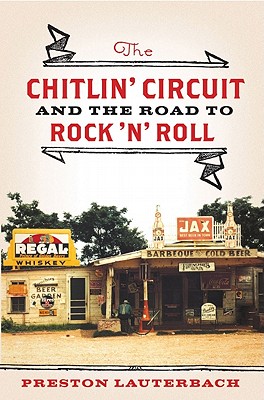Book Review: The Chitlin’ Circuit: And The Road To Rock &rsquoN&rsquo Roll
Book Reviewed by Robert Fleming
It’s a shame that nothing substantial has been written about that sacred
Black entertainment network of the Jim Crow South known as the Chitlin’
Circuit. Preston Lauterbach, a music journalist based in Memphis, has done
us a great honor by revisiting this collection of clubs and joints in small
towns and cities from Alabama, Louisiana, Texas, Tennessee, Mississippi,
Georgia, Oklahoma, and other places below the Mason-Dixon line in this new
book, The Chitlin’ Circuit and the Road to Rock ’n’ Roll.
With a snappy, lively feel to his narrative and rare photos, Lauterbach
describes the Chitlin’ Circuit, which was established in the 1930s, was
exploited by a gangster-club owner Denver Ferguson and a stylish bandleader
Walter Barnes. Readers of the Chicago Defender, one of the leading
Black publication of the day, savored Barnes’ accounts of his band’s
exploits on the road where the colored and sometimes white folks gathered in
the segregated South for music and dancing not to be found in the stodgy
mainstream clubs.
"In the South, there was nothing but farming; tobacco fields, rice fields,
sugar cane, cotton fields," Sax Kari, one of the those people familiar with
the circuit. "Black people worked all week and Saturday night was their
night to howl, get drunk, and fornicate."
Every place in the Black areas had its "stroll," with the people of color in
control of the commerce and accommodations. When Black performers went to a
city or town, they could always be assured to find a place to rest and eat
rather than being turned away by white bigotry. Frequently, they honed
their craft in these places, trying out new arrangements and songs.
The Chitlin’ Circuit was a raw and raucous place. Many of these "nighteries"
had a sinister, criminal feel and the moneyed moguls controlled the Black
music business. The author writes about their power, saying "their number
rackets, dice parlors, dance halls, and bootleg liquor and prostitution
rings financed the artistic development of breakthrough performers."
Some of the stars, which Lauterbach presents in colorful anecdotes, were:
Louis Jordan, Little Richard, Redd Foxx, Jimmie Lunceford, B.B. King,
Butterbeans and Susie, T-Bone Walker, Johnny Ace, James Brown, Aretha
Franklin, Same Cooke, and others. Eventually, the World War II heyday of the
swing and dance orchestras gave way to the rise of small combos and later
blues and R&B groups. The circuit finally rasped out its last breath with
the push of integrated clubs during the civil rights era of the 1960s and
1970s.
What Lauterbach’s revealing account of the Chitlin’ Circuit proves it is
false and misleading to believe that this network of jukes, road houses, and
clubs was somehow inferior to any "quality" white establishment. Well
researched and engrossing, this book is an education to anyone who is
interested in African-American musical and cultural history.

